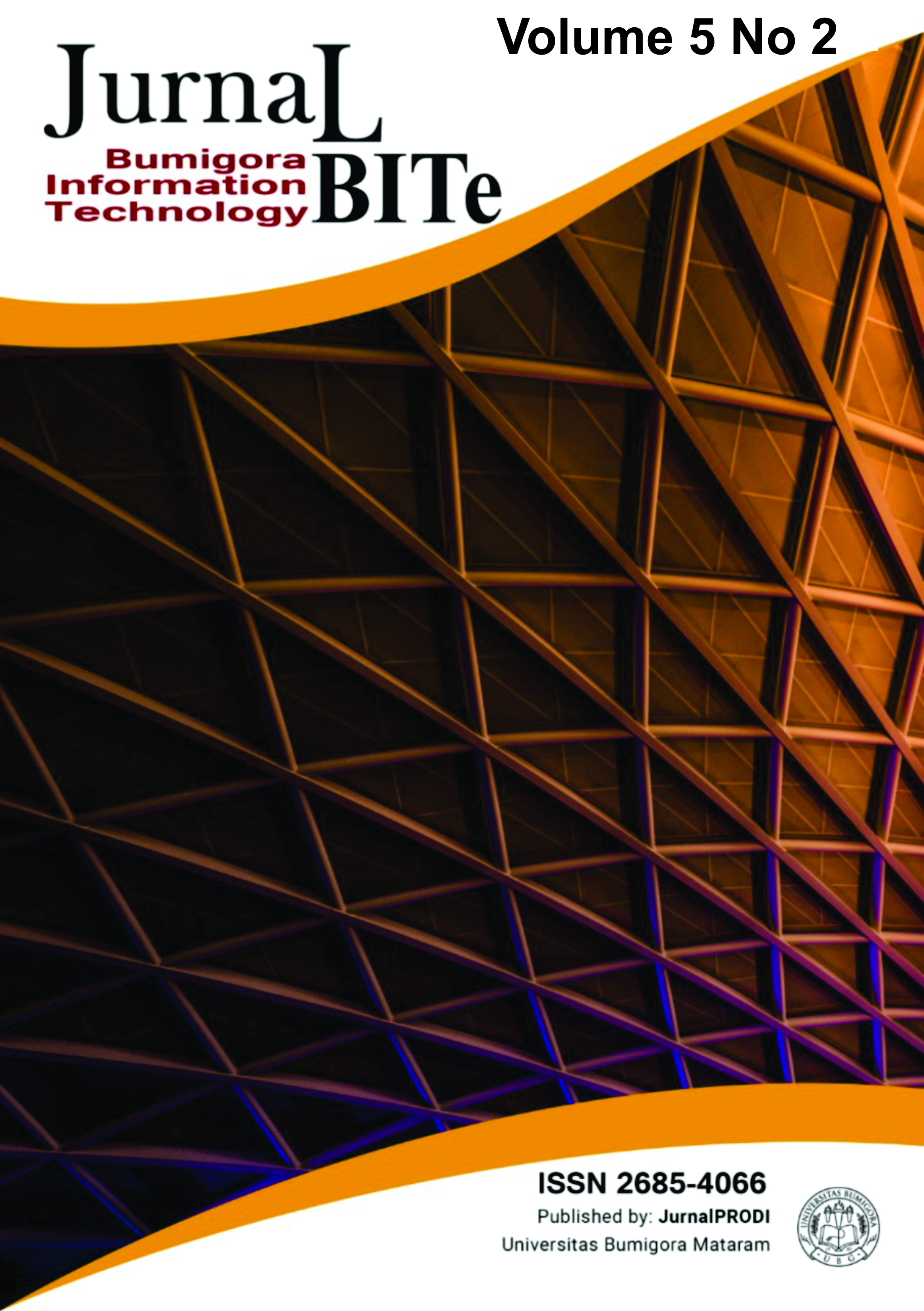Design and Build an Android-Based Online Thesis Tutoring Application Using the Human Centered Design Method
Abstract
Application-based services are currently increasingly being used, one of which is thesis guidance services for final year students. The process of completing students' final assignments is sometimes difficult to monitor due to the lack of time for supervisors and students to meet. In this research, it is proposed to create an online thesis guidance service system based on an Android application. In the application that will be built, all features will be tailored to the specific needs of users, namely the needs of supervisors and students in providing online thesis guidance services. Therefore, it is proposed to design applications using the Human Centered Design (HCD) method. HCD is a method of developing software that focuses on the needs of certain user groups by conducting needs analysis directly with potential users. By using this method, it was found that the application that was built functioned very well and met user expectations, where the level of user satisfaction with the features provided was very good.
References
[2] F. Maulana and D. A. Ramadhan, “Pengembangan Aplikasi Android Patriot Pangan sebagai Sarana e-Participation untuk Sistem Ketahanan Pangan Nasional,” J. Ilmu Komput. dan Agri-Informatika, vol. 7, no. 2, 2020, doi: 10.29244/jika.7.2.124-134.
[3] A. Wilson, “Penerapan Metode Pembelajaran Daring (Online) melalui Aplikasi Berbasis Android saat Pandemi Global,” SAP (Susunan Artik. Pendidikan), vol. 5, no. 1, 2020, doi: 10.30998/sap.v5i1.6386.
[4] R. Z. Fajriyah and A. Prastowo, “Implementasi Pembelajaran TIK Dengan Penggunaan Microsoft Word Untuk Kemampuan Literasi Digital Siswa Kelas IV SD Islam Terpadu,” J. Ilm. Mandala Educ., vol. 8, no. 1, 2022, doi: 10.58258/jime.v8i1.2727.
[5] H. N. Nguyen, G. Lasa, I. Iriarte, A. Atxa, G. Unamuno, and G. Galfarsoro, “Human-centered design for advanced services: A multidimensional design methodology,” Adv. Eng. Informatics, vol. 53, 2022, doi: 10.1016/j.aei.2022.101720.
[6] I. Göttgens and S. Oertelt-Prigione, “The Application of Human-Centered Design Approaches in Health Research and Innovation: A Narrative Review of Current Practices,” JMIR mHealth and uHealth, vol. 9, no. 12. 2021. doi: 10.2196/28102.
[7] Y. Yarpriransa, D. Saripurna, and H. Santoso, “Implementasi Metode Scrum pada Pengembangan Aplikasi Bimbingan Skripsi Online,” Hello World J. Ilmu Komput., vol. 2, no. 1, 2023, doi: 10.56211/helloworld.v2i1.228.
[8] D. K. Robby, S. Zulaikha, D. Rahmawati, and A. B. Rifai, “MODEL SISTEM INFORMASI BIMBINGAN SKRIPSI BERBASIS WEBSITE PADA PROGRAM STUDI MANAJEMEN PENDIDIKAN FAKULTAS ILMU PENDIDIKAN UNIVERSITAS NEGERI JAKARTA,” Improv. J. Ilm. untuk Peningkatan Mutu Manaj. Pendidik., vol. 8, no. 02, 2021, doi: 10.21009/improvement.v8i2.22661.
[9] M. A. Kurniawan, I. Fitri, and D. Hidayatullah, “Sistem Informasi Bimbingan Skripsi Menggunakan Metode Rapid Application Development Berbasis User Centered Design,” J. MEDIA Inform. BUDIDARMA, vol. 5, no. 3, 2021, doi: 10.30865/mib.v5i3.3068.
[10] U. Stankov and U. Gretzel, “Tourism 4.0 technologies and tourist experiences: a human-centered design perspective,” Inf. Technol. Tour., vol. 22, no. 3, 2020, doi: 10.1007/s40558-020-00186-y.
[11] Y. Yusanto, “Ragam Pendekatan Penelitian Kualitatif,” J. Sci. Commun., vol. 1, no. 1, 2020, doi: 10.31506/jsc.v1i1.7764.
[12] E. W. Fridayanthie, H. Haryanto, and T. Tsabitah, “Penerapan Metode Prototype Pada Perancangan Sistem Informasi Penggajian Karyawan (Persis Gawan) Berbasis Web,” Paradig. - J. Komput. dan Inform., vol. 23, no. 2, 2021, doi: 10.31294/p.v23i2.10998.
[13] M. Fadhli and Annisa Marion, “Penerapan Metode Prototyping Pada Aplikasi Sentra Pelayanan Kepolisian Terpadu Berbasis Web,” J. Appl. Comput. Sci. Technol., vol. 3, no. 1, 2022, doi: 10.52158/jacost.v3i1.267.
[14] A. Hinderks, M. Schrepp, F. J. Domínguez Mayo, M. J. Escalona, and J. Thomaschewski, “Developing a UX KPI based on the user experience questionnaire,” Comput. Stand. Interfaces, vol. 65, 2019, doi: 10.1016/j.csi.2019.01.007.
[15] I. D. Sabukunze and A. Arakaza, “User Experience Analysis on Mobile Application Design Using User Experience Questionnaire,” Indones. J. Inf. Syst., 2021, doi: 10.24002/ijis.v4i1.4646.
[16] Y. Yusroni and A. Anton, “Implementasi Teknologi Cloud Computing Pada PT Zurich Topas Life Jakarta,” Simpatik J. Sist. Inf. dan Inform., vol. 2, no. 1, 2022, doi: 10.31294/simpatik.v2i1.1110.
[17] I. O. Suzanti, N. Fitriani, A. Jauhari, and A. Khozaimi, “REST API Implementation on Android Based Monitoring Application,” in Journal of Physics: Conference Series, 2020, vol. 1569, no. 2. doi: 10.1088/1742-6596/1569/2/022088.
[18] S. Rasio Henim and R. Perdana Sari, “Evaluasi User Experience Sistem Informasi Akademik Mahasiswa pada Perguruan Tinggi Menggunakan User Experience Questionnaire,” J. Komput. Terap., vol. 6, no. 1, 2020.

This work is licensed under a Creative Commons Attribution 4.0 International License.











